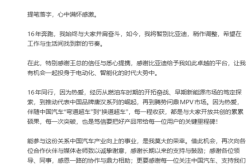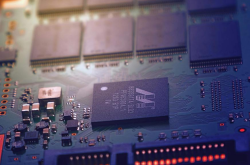Mobile phone manufacturers, running out of cards to play
![]() 03/20 2025
03/20 2025
![]() 451
451
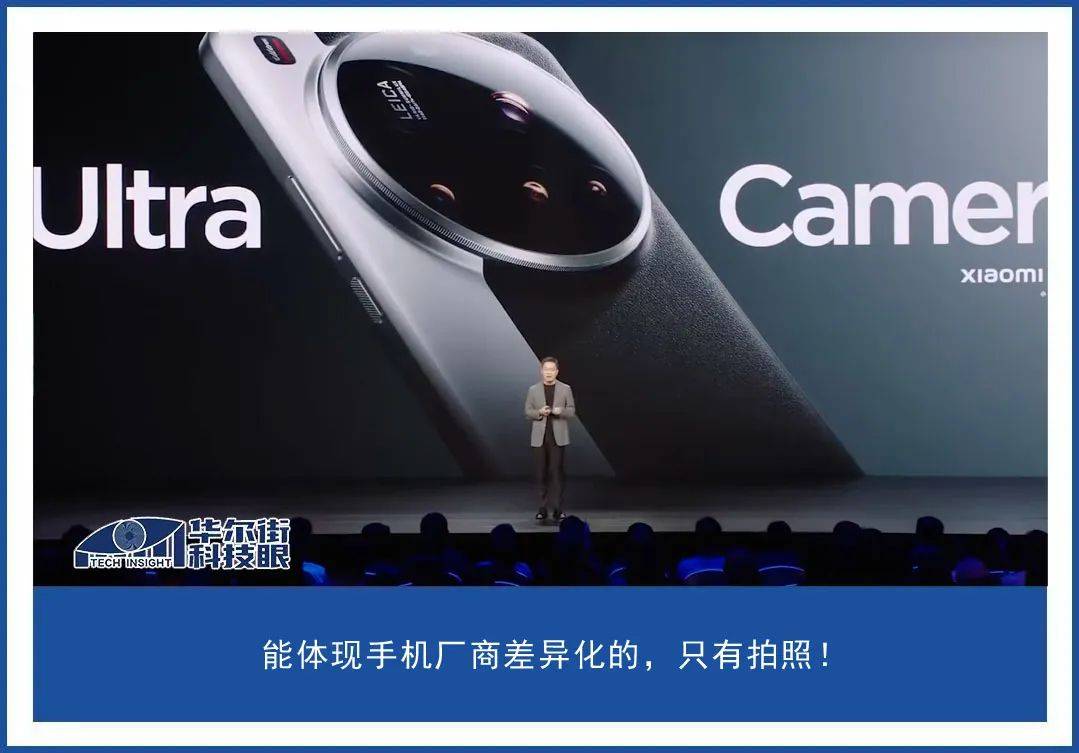
By Du Jie
Edited by cc Sun Congying
The Xiaomi 15 Ultra, which focuses on imaging functions, has become the first flagship model of 2025.
From the perspective of the release schedule, almost all previous Xiaomi Ultra models have chosen to be released at the beginning of the year, far earlier than the release time of other manufacturers' main autumn models. This will undoubtedly kick off the "Ultra flagship battle", and this year's camera phones will once again be pushed to new heights.
It is not intended to speculate whether Xiaomi intentionally aims to "lead" an "arms race", but various complex emotions are difficult to conceal.
Each year brings different phones, but when piecing together the memories of flagship phone launches over the past 2-3 years, it is evident that, including Xiaomi, the innovations of flagship phones, besides different photography parameters, seem to show no significant changes. As flagship phones, why do they "look the same every year"?
Are mobile phone brands running out of cards to play?
Catfish Xiaomi, igniting a major iteration in mobile phone photography capabilities
The positioning of Xiaomi 15 Ultra is as a "peak imaging technology flagship", with upgrades including a 2K screen, ultrasonic fingerprint unlocking, Qualcomm Snapdragon 8 Ultimate Edition processor, an overall heat dissipation system, a 6000mAh Jinshajiang battery, and more. However, the most important upgrade still comes from the camera section. Inheriting Leica optics lenses, it features a quad-camera with eight focal lengths for lossless zoom, a one-inch sensor, a telephoto sensor with up to 200 million pixels, and even the design of the back of the phone has been "camera-like", giving it a strong "German flavor".
Nevertheless, at this year's launch event, Lu Bingwei, President of Xiaomi Group, bluntly stated: "After the launch of Xiaomi 15 Ultra, it will be difficult for competitors to call their models Ultra anymore."
In fact, it's not just Xiaomi. Today, the flagship performance that Ultra models can represent comes from camera imaging and video. Users have the deepest intuitive experience with it and are most willing to pay for it; manufacturers also invest the most effort in optimizing it, making it a synonym for brand image. It can be said that camera imaging functions are the nuclear weapons in today's Ultra model competition, and whoever possesses them wins the world. (For details, see: Is Xiaomi's high-end strategy easy to replicate?)
Xiaomi can be called a market catfish. After realizing this, mobile phone manufacturers have even brought in veteran camera manufacturers to engage in joint research and development, with the battlefire once crossing over to the adjacent camera circle. Examples include Xiaomi + Leica, OPPO + Hasselblad, vivo + Zeiss, and there are rumors that Honor is also considering the possibility of collaboration.
Public information shows that domestic manufacturers, including Huawei, Xiaomi, OnePlus, OPPO, vivo, and others, have seen a continuous increase in research and development expenses and team size for imaging functions.
OPPO's imaging team has over 1000 members, with 400 in the algorithm team, and an annual investment exceeding 1 billion yuan. Xiaomi's research and development investment this year is expected to reach 30 billion yuan, while Huawei's total research and development investment last year was approximately 164.7 billion yuan, with the majority spent on imaging and related algorithms.
Therefore, you can see that the camera function of Ultra models can be considered a professional camera, with generations of progress in pixels, focusing, aperture, lenses, zoom, professional video recording, algorithm optimization, AI photo editing, and more. This has not only forced traditional camera manufacturers out of business but also given birth to new shooting specifications and industrial production processes, even changing Hollywood's production models and giving rise to peripheral industries for image production, not to mention the changes it has brought to ordinary consumers' lifestyles. An obvious example is that when traveling, very few people carry cameras anymore, instead opting to take photos with their phones.
So why have mobile phone manufacturers unanimously converged on this track? Are there really no other aspects for flagship models to compete in? Is it "irrelevant" for mobile phones, which are originally communication tools, to compete fiercely in the field of imaging?
High-end models, running out of cards to play?
From the perspective of users' actual usage, it seems that only the camera function truly affects purchasing decisions.
First, in terms of processor cores, almost all are Snapdragon 8 Ultimate Edition, and even self-developed chips do not constitute an absolute advantage.
Secondly, in terms of screen specifications, the size and resolution are basically the same. The so-called dual-curved and quad-curved screens are nothing more than issues of handling feel, while sunlight screens and eye protection modes are just icing on the cake.
Battery life has always been a shortcoming, but it can be compensated for to some extent with fast charging. It is expected that a 6000mAh battery capacity will become the mainstream this year. There are differences in power consumption management capabilities among different manufacturers, so battery life will be a factor affecting purchase decisions.
Appearance design, ecosystem, and this year's hot topic, artificial intelligence (AI), are completely subjective and cannot be objectively measured.
As for foldable screens or even triple-fold screens, they are not supported by products at this price point, and the relevant ecosystem is not yet perfect, with technology still to mature.
Simply put, for these high-end models, which often start at 6000 yuan, the only factor that truly affects consumers' purchase decisions is the camera function. In other words, the only aspect that can truly reflect the differentiation among different mobile phone manufacturers is photography.
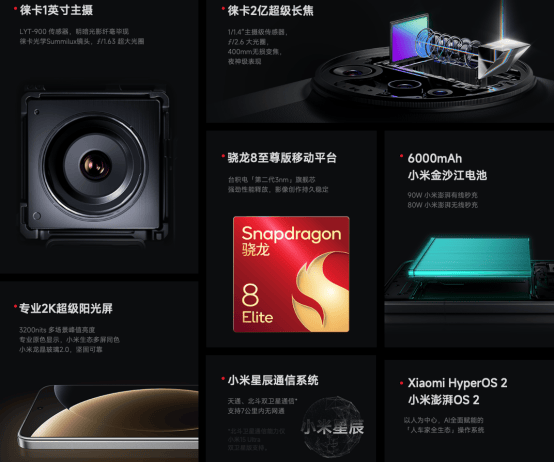
Everything a flagship model can boast about is in this picture
To this end, Wall Street Tech Eye randomly interviewed several representative consumers to see their phone purchasing intentions.
Li Xiaohua is an outdoor enthusiast who values photography performance and satellite calling capabilities.
He told Wall Street Tech Eye that just the camera function alone has already made him feel overwhelmed, with his budget doubling from 3000 yuan to 6000 yuan. Currently, he favors the OPPO Find 7 Ultra, especially its full-lens, full-focal-length 4K 60fps recording, but he also likes the photography style of the vivo X100 Ultra, so he is still undecided.
When asked about the factors he considers when purchasing a phone, he showed Wall Street Tech Eye a comparison chart he made himself, which is very detailed. However, the more he compared, the more he felt that everyone was similar, and in the end, he could only look at the price and promotion strength.
Yaoyao is a foodie and loves to shop. She is not interested in studying camera parameters and only cares about the feeling of the photos.
Currently, as an Apple fan, she has to give up her iPhone because its camera function is too lackluster. On the other hand, the color rendering of Huawei Pura70 Ultra is very pleasing, and the style of taking photos casually suits her usage scenario.
When asked about the factors that affect her purchase, she thought for a while and felt that it was only the camera. Because she doesn't understand other specifications and parameters, but the photo effect is obvious at a glance.
Yi Bo, whose online name is "Little Wizard", is a professionally acclaimed photographer in the circle.
Yi Bo has compared the imaging quality of current flagship phones in detail and, from a professional and critical perspective, finds none of them satisfactory. However, he believes that there is no need to be so demanding when it comes to phone photography, and it is sufficient for daily scenarios such as WeChat Moments and Xiaohongshu. As a Leica fan, he is more inclined to choose Xiaomi.
As a professional photographer, he feels that his reasons for choosing a phone are, first, the quality of the photos, second, the ease of use of the system, and third, the network signal.
This shows that in the 5000-6000 yuan flagship phone segment, most people mainly consider the camera when purchasing a phone.
Rising consumption data for high-end models
Driven by the powerful enhancement of mobile phone camera functions, high-end mobile phone consumption data has also risen. Since 2020, manufacturers such as Huawei, Xiaomi, vivo, and OPPO have embarked on the path of premiumization for mobile phones, sparing no cost in stacking materials in terms of configuration, targeting the deep-water area above 6000 yuan in terms of price, and striving to enter the global market in terms of layout. In a word, they are comprehensively benchmarking against the iPhone.
Today, we can see that most manufacturers adopt a similar strategy: The Ultra flagship sets a technical benchmark, the Pro version is the main sales driver, and the standard version focuses on cost-effectiveness.
Therefore, each manufacturer's Ultra flagship must go all out to become the "proving ground" for the latest technology, being jokingly referred to in the industry as the "super-sized cup", undoubtedly representing the pinnacle of technology for civilian-grade communication products and directly influencing the development direction of the mobile phone industry.
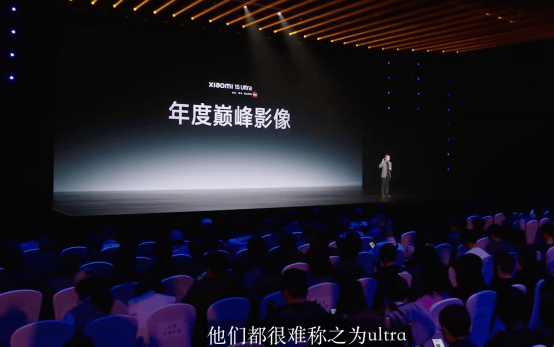
Market research firm CounterPoint Research published an article on March 4th stating that the Chinese smartphone market is accelerating its premiumization transformation, with the share of phones priced at 600 USD (currently approximately 4356 yuan) and above being only 11% in 2018 but growing to 28% in 2024.
Among phones priced at 600 USD and above, Huawei's share reached 29%, ranking first among domestic manufacturers. Meanwhile, Apple's market share declined to 54%. Domestic manufacturers such as Xiaomi and vivo have also increased their investment in the high-end market. In 2024, the collective share of these manufacturers in the high-end market increased from 5% in 2020 to 15%.
Price segment share of Chinese smartphone market, 2018-2024
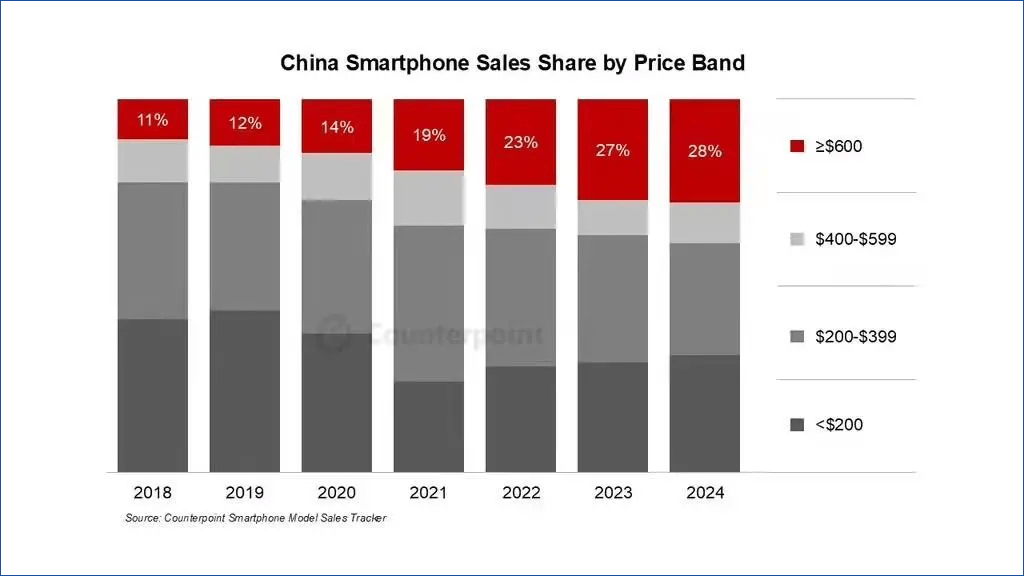
Brand share of Chinese smartphone market priced above 600 USD, 2018-2024
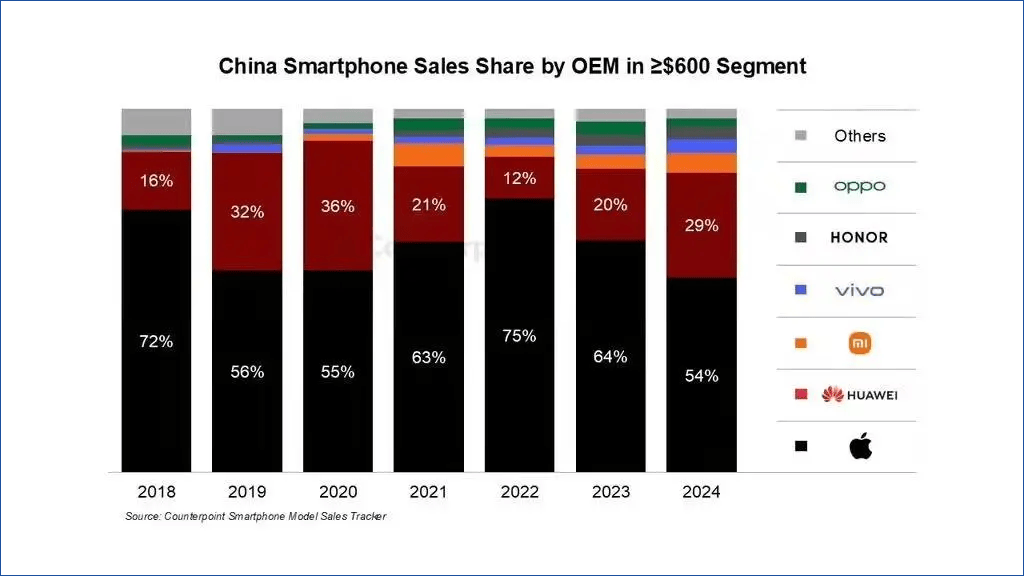
The consumption structure of the Chinese mobile phone market presents a "dumbbell shape", with high-end models priced above 5000-6000 yuan and entry-level models priced below 2000 yuan accounting for the largest proportions, respectively representing consumption upgrades and cost-effectiveness choices.
According to the latest data on the Chinese smartphone market in January 2025, the ultra-high-end market segment above 6000 yuan accounts for approximately 17.3%-20% of the overall market and is one of the fastest-growing segments. In the high-end market segment of 5000-6000 yuan, Xiaomi ranks second only to Huawei and Apple, jumping to third place in market share, becoming the biggest dark horse, with the Ultra being one of its best-selling models.
What do mobile phone manufacturers rely on to win?
Despite a significant increase in product pricing, the corresponding value increment is extremely limited, and consumers find it difficult to experience new features that match the price increase.
Looking back at the not-so-long development history of smartphones, there have been music phones, gaming phones, MP4 phones, office phones, and camera phones in the past decade or so. These "specialized" niche areas jointly supported the broad concept of "smartphones".
With the increase in mobile internet speeds, the innovation of Moore's Law in processors, and the increase in screen size, only the unified term "smartphone" remains in the end, and other so-called "specialized" niche areas have all been easily realized. The only exception is camera phones, which have not yet reached their peak due to the existence of technical barriers and have thus become the "backbone" of mobile phone development.
Global shipments of DSLRs, mirrorless cameras, and smartphones, data source: CIPA, IDC

According to forecasts by relevant institutions, smartphone shipments will continue to increase at a rate of 8.7% this year, while the scale of DSLRs and mirrorless cameras will remain stagnant. On the one hand, camera phones are becoming more and more professional, while on the other hand, traditional imaging manufacturers are stagnating technologically. From a capital perspective, it is an indisputable fact that funds are flowing to camera phones and their upstream and downstream manufacturers.
Back to the summer of 2011, when Xiaomi released its first phone. Although the price of 1999 yuan was called "butchering", it also chilled the hearts of domestic manufacturers: they could only return to the old path of low-price competition.
At that time, international giants such as Apple, Samsung, and HTC were the dominant forces in flagship phones priced above 5000 yuan. The struggle of domestic mobile phones was never on the same level from the start, and the only card they had was low price.
Returning to 2025, the status of domestic mobile phone manufacturers has changed dramatically. Have they gained more cards?
Taking the hot topic of mobile phone AI in recent years as an example, Honor announced an investment of 10 billion USD over the next five years, focusing on end-cloud collaborative imaging technology and cross-device interconnection, health monitoring, and other scenarios.
vivo has invested over 23 billion yuan, focusing on the deployment of large models on the client side; OPPO has jointly optimized chip-level AI model efficiency with MediaTek; and Xiaomi is expected to invest 7.5 billion yuan in AI to achieve full-ecosystem intelligence.
However, AI cannot immediately generate revenue. The flagship phones that have been unveiled this year, including the Samsung S25 and Xiaomi 15 Ultra, already have initial native AI functions, but they are only "accessories" that assist with functions such as photography, photo editing, and recording, and cannot drive real purchasing demand.
Institutions such as Jefferies have pointed out that mobile phone AI has a limited impact on the consumer market in the short term. Their calculations show that although AI phone shipments may reach 150 million units by 2027, user stickiness has not yet formed a scale effect.
When there are no capable generals in Shu, Liao Hua becomes the vanguard. This "Liao Hua" can only be the camera function.
Over the past decade, camera phones have evolved from being an unrecognized "chicken rib function" to attracting capital and hot money, completely overshadowing traditional imaging equipment. However, the story of "a new generation replacing the old" seems to always carry a warning: When camera phones can no longer sustain this immense prosperity, where will the form of high-end phones and the future of mobile phones as a whole be?

